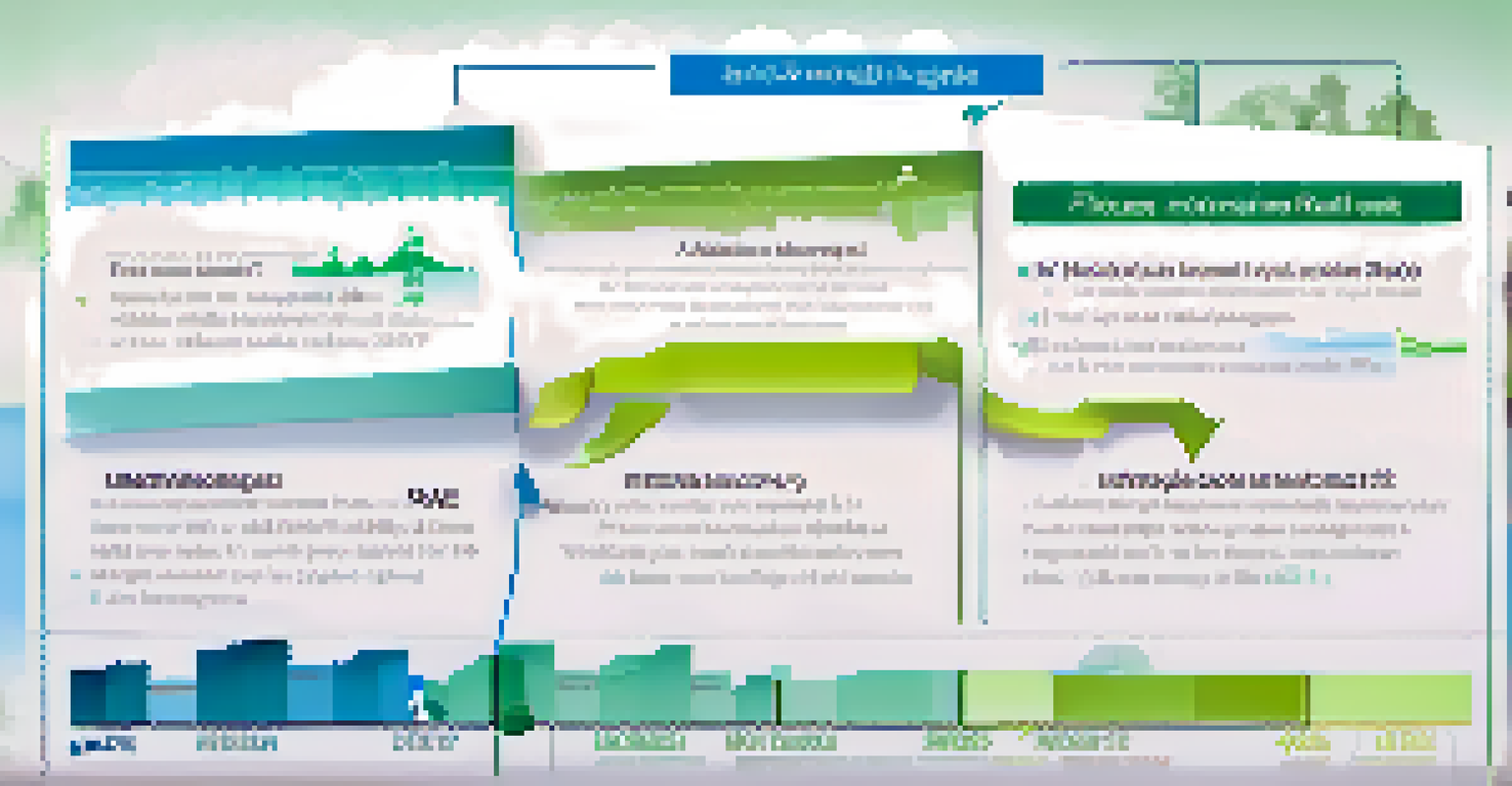Comparing Fixed vs. Adjustable Rate Mortgages

What is a Fixed Rate Mortgage?
A fixed-rate mortgage is a home loan with an interest rate that remains unchanged throughout the life of the loan. This stability makes it easier for homeowners to budget their monthly payments, as they won't be surprised by fluctuating rates. Typically, these loans come with terms of 15, 20, or 30 years, providing flexibility depending on your financial goals.
In the world of finance, you cannot change the direction of the wind, but you can adjust your sails.
For example, if you secure a fixed-rate mortgage at 3% for 30 years, your monthly payment will stay the same even if market rates rise significantly. This predictability can be a comfort during uncertain economic times, allowing homeowners to plan for the long haul without worrying about increasing payments. It's a popular choice for those who prefer stability over potential savings.
However, one common misconception is that fixed rates are always the best option. While they offer predictability, the rates may initially be higher than those of adjustable-rate mortgages. It's essential to weigh your long-term plans and the potential for interest rate changes when deciding if a fixed-rate mortgage is right for you.
What is an Adjustable Rate Mortgage?
An adjustable-rate mortgage (ARM) features an interest rate that can change over time, typically after an initial fixed period. This type of mortgage often starts with a lower rate than fixed-rate loans, making it attractive for first-time homebuyers or those planning to move within a few years. The initial rate period can last anywhere from one to ten years, after which the rate adjusts based on market conditions.

For instance, if you secure a 5/1 ARM, your interest rate is fixed for the first five years and will adjust annually thereafter. This can lead to lower initial payments, allowing homeowners to save money or invest elsewhere. However, the trade-off is the uncertainty of future payments, which can increase significantly if interest rates rise.
Fixed-Rate Mortgages Offer Stability
These loans provide predictable monthly payments, making budgeting easier for homeowners.
It's also crucial to understand the potential risks involved. While ARMs can be advantageous in a stable or declining interest rate environment, they can lead to financial strain if rates spike. Homeowners need to assess their risk tolerance and financial situation before opting for an adjustable-rate mortgage.
Key Differences Between Fixed and Adjustable Rates
The primary difference between fixed and adjustable-rate mortgages lies in how interest rates behave over time. Fixed-rate mortgages keep the same interest rate for the duration of the loan, while ARMs can vary based on market trends. This fundamental difference can significantly impact your monthly payments and overall financial planning.
The best time to plant a tree was 20 years ago. The second best time is now.
Another key distinction is the initial interest rate. ARMs typically offer lower starting rates compared to fixed rates, making them appealing to some buyers. However, it's important to remember that these lower rates may reset after a few years, potentially leading to increased costs down the line.
Lastly, your financial goals play a big role in deciding which mortgage type is best for you. If stability and predictability are your top priorities, a fixed-rate mortgage may suit you better. Conversely, if you're looking to save on initial payments and are comfortable with some risk, an ARM might be the way to go.
Pros and Cons of Fixed Rate Mortgages
Fixed-rate mortgages come with several advantages, the most significant being their predictability. Homeowners can budget effectively, knowing their monthly payments will remain stable. This can be especially beneficial during inflationary periods when costs in other areas may rise.
Another pro is the peace of mind that comes with a fixed rate; there are no surprises. Even if the economy fluctuates and interest rates increase, your payment won't change. This can be a major relief for families trying to maintain financial security.
ARMs Can Lead to Lower Initial Costs
Adjustable-rate mortgages often start with lower rates, appealing for those planning to move soon.
However, there are downsides to consider. Fixed-rate mortgages generally start with higher interest rates than ARMs. If you’re planning to move or refinance within a few years, you might not benefit from the long-term stability that a fixed rate offers, making it less cost-effective.
Pros and Cons of Adjustable Rate Mortgages
Adjustable-rate mortgages have their own set of advantages, primarily the lower initial interest rates. This can result in lower monthly payments for the first few years, allowing homeowners to allocate funds elsewhere, like savings or home improvements. For those who do not plan to stay in one place long-term, this can be an appealing option.
Another benefit is the potential for lower overall costs if interest rates remain stable or decrease. If you time your mortgage correctly, you might benefit from lower payments over the life of the loan compared to a fixed-rate mortgage. This flexibility can be advantageous in a favorable market.
However, the uncertainty of future payments is a significant risk. After the initial fixed period, your rate can increase, leading to higher payments that might strain your budget. It’s essential for potential borrowers to assess their comfort with this risk and their long-term housing plans.
Determining Which Mortgage is Right for You
Choosing between a fixed-rate and an adjustable-rate mortgage depends largely on your personal financial situation and housing plans. Consider how long you plan to stay in your home. If you anticipate moving within a few years, an ARM might save you money in the short term. However, if you’re settling down for the long haul, a fixed-rate mortgage could provide the stability you need.
Another factor to evaluate is your risk tolerance. If you prefer a predictable payment schedule and peace of mind, a fixed-rate mortgage is likely the better fit. On the other hand, if you’re open to fluctuations and potentially lower payments, an ARM might work for you.
Choose Based on Financial Goals
Your decision between fixed or adjustable rates should align with your long-term financial plans and risk tolerance.
Finally, take into account your financial goals. If budget stability is essential, fixed rates are a solid choice. However, if you’re aiming for the lowest initial costs and can handle some uncertainty, an adjustable-rate mortgage might be the way to go.
Consulting with a Mortgage Professional
Navigating the world of mortgages can be daunting, which is why consulting with a mortgage professional is a wise step. They can provide valuable insights tailored to your specific situation, helping you understand the nuances of both fixed and adjustable-rate options. A professional can also help you assess your financial goals and risk tolerance, ensuring you make an informed decision.
Additionally, mortgage professionals often have access to a variety of lenders and loan products, which can open up more options that suit your needs. This access can potentially lead to better rates or terms than you might find on your own. They can also guide you through the application process, making it smoother and less stressful.

Ultimately, seeking expert advice can save you time and money while equipping you with the knowledge to choose the right mortgage type for your future. Whether you lean towards a fixed or adjustable-rate mortgage, a professional can help you make a choice that aligns with your financial strategy.